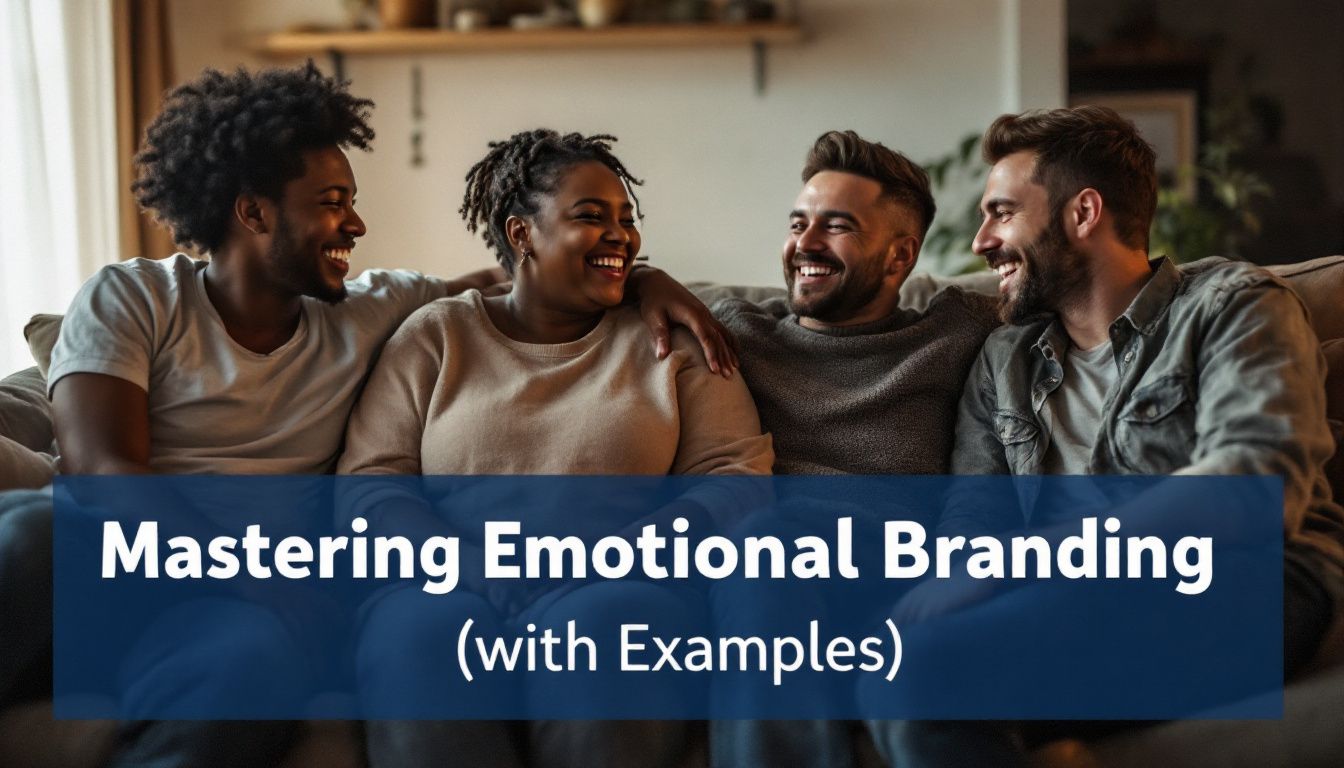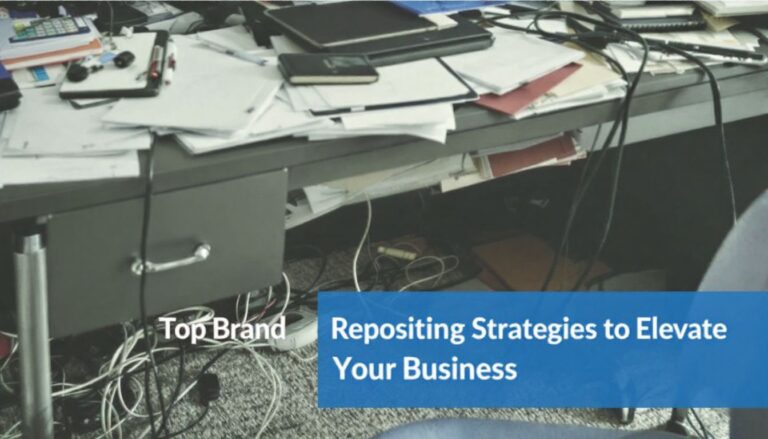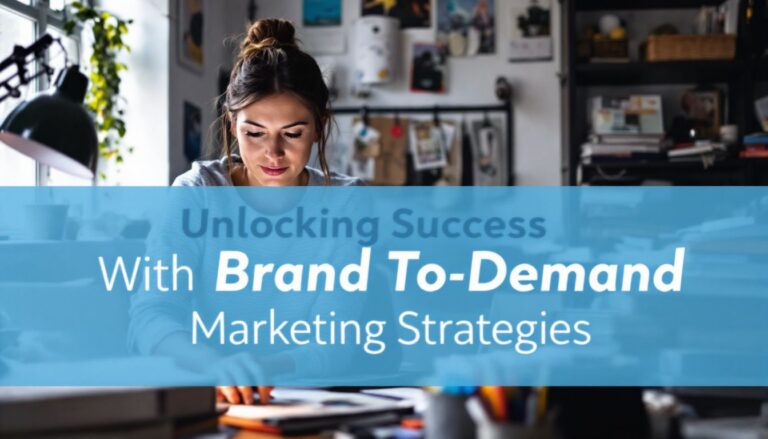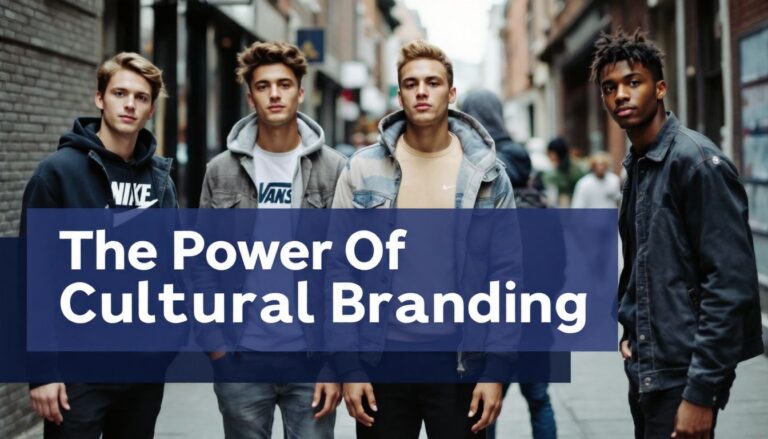Are you finding it hard to help customers feel connected to your brand? I know how tough that can be. After researching, I found Emotional Branding can boost customer loyalty by tapping into feelings people already have. 1 In this post, I’ll share clear examples of how well-known brands use emotions effectively—so you can build stronger bonds with your own customers. Keep reading to see how it works! 3
Key Takeaways
- Emotional branding pulls in 50% more loyalty than factual ads—since feelings drive 90% of buying decisions.
- Coca-Cola launched “Share a Coke” back in 2011, printing folks’ names right onto bottles in Australia—it boosted sales by 7%.
- Nike’s famous “Just Do It” tagline, dating from 1988, still hits home—today, it resonates with 360 million social media fans through inspiring stories of ordinary people overcoming big challenges.
- Dove’s “Real Beauty” ads showcase everyday women instead of flawless models, forming genuine emotional ties with their audience.
- Great emotional branding taps into Aristotle’s three core appeals—ethos for trust, pathos for emotion, logos for reason—to build meaningful, lasting customer relationships.
Mastering Emotional Branding

Emotional branding goes beyond logos and colors – it taps into how people feel about your brand. I want to show you how top brands like Nike and Coca-Cola create deep connections that turn customers into loyal fans.
Definition and Importance of Emotional Branding
To me, emotional branding is about forming real connections between people and products. It’s more than logos or catchy phrases—it reaches into people’s hearts and minds. That boosts brand loyalty, making folks pick one brand over another.
Working with clients taught me brands need to tap into basic human needs, like feeling part of a group, earning trust, and experiencing pride. Apple and Nike do this great—they don’t only sell products, but also emotions and ideas that really resonate.
Numbers clearly back this up. Emotional branding can work over 50% better than plain fact-based ads. 1 Around 90% of buying decisions come from our gut feelings, instead of logic. 1 I’ve watched brands improve customer loyalty and cut marketing costs by forming emotional connections. Coca-Cola nailed this with its “Share a Coke” campaign, printing people’s first names on bottles—that simple, personal touch gave buyers a sense of being special. 2 A strategy like this builds strong ties and turns casual customers into loyal fans, sticking around for years.
Emotional Branding vs. Emotional Advertising
I see many brands mix up emotional branding with emotional advertising – they’re not the same thing! Emotional branding covers your whole brand perception while emotional advertising focuses on single campaigns. Let me break down the key differences between these two approaches:
| Emotional Branding | Emotional Advertising |
|---|---|
| Shapes overall brand identity | Creates temporary emotional reactions |
| Long-term strategy | Short-term tactical approach |
| Influences product design | Focuses on promotional content |
| Builds lasting customer relationships | Aims for immediate engagement |
| Increases referrals and brand value | Drives specific campaign metrics |
| Shapes company culture and values | Exists within marketing department |
| Affects every customer touchpoint | Limited to specific media channels |
Strong emotional branding raises referrals naturally. People talk about brands they feel connected to. This connection boosts brand awareness and value across markets. 2 Great brands use emotion in everything – from logos to product design.
Successful companies like Apple blend both approaches. Their ads create feelings, but those feelings match their brand promise. This match makes both tactics work better. Smart brands know the difference and use each at the right time. 3
The Role of Neuroscience in Emotional Branding
Neuroscience has really changed how brands reach us emotionally. My research found that 90% of buying decisions happen subconsciously—not through careful thinking. Brain tools like EEG and fMRI scans allow marketers to see our true emotional reactions to ads and products.
Turns out, our brains process images 60,000 times faster than text—that’s why visual branding hits so strongly. 4
Good brand experiences trigger dopamine, the brain chemical that makes us feel good. This dopamine release creates a strong emotional connection, pulling customers to return again and again.
Emotional elements make up around half of any brand experience, not just product features or price tags. Companies today use these brain insights to design ads that spark specific feelings—like joy, trust, or a sense of belonging.
The best brands don’t simply sell products. They tap deep emotions by relying on proven brain-based strategies.
Connection Between Emotional Branding and Aristotle’s Appeals
Aristotle knew a thing or two about getting people to feel something. His three ways to win people over—trust, emotion, and logic—work just as well for brands today as they did in ancient Greece.
Ethos: Building Credibility and Trust
I build trust in my brand by being honest every day. Trust creates a strong emotional tie with customers—it’s the heartbeat of loyalty. Ethos helps me show expertise and character clearly in every message. 5 My customers want evidence behind my claims before they spend their money. So, I keep my promises and always share accurate facts. This matches Aristotle’s idea: credibility matters the most.
People trust my brand after seeing actual proof behind my words. I share my knowledge openly, without showing off. Customers stick around if they feel that trust is real. Building honest relationships over time creates the most loyal fans.
Good brands understand trust can’t be faked—it grows from steady good behavior. Marketing ethics isn’t just nice to have—it’s essential for long-lasting success. 6
Pathos: Evoking Empathy and Emotion
Pathos is key in my emotional branding approach. I tap into feelings—joy, sadness, nostalgia—to build bonds with customers. My best campaigns make people feel deeply. Dove’s “Real Beauty” ads work because they touch common concerns about self-image many women have.
These ads don’t just sell soap—they encourage self-acceptance and spark real conversations about beauty standards. 8
Emotional appeals must match true brand values—faking feelings turns customers off quickly. My research confirms brands that emotionally connect win stronger customer loyalty than brands relying on facts alone.
The right emotional tone makes your message memorable, staying in people’s minds long after viewing. Genuine emotional connections can drive more than sales. They create loyal brand advocates who happily share your story with friends. 7
Now, let’s consider how logos balances out these emotional techniques.
Logos: Using Logic and Reason
I grow trust in my brand through clear thinking and solid facts. Logos helps me explain exactly why my products work. 8 In marketing, I include real numbers, test results, and easy-to-read charts as proof.
People trust brands that offer evidence—not empty promises. Facts become stronger when paired with stories that move people. Apple does a great job of this—they mix clear specs with examples of how products improve everyday life.
Smart brands use logic to address real customer problems. This approach builds respect, not relying on feelings alone.
Benefits of Emotional Branding
Emotional branding brings clear gains for your business by setting you apart from rivals and building deeper customer bonds – read on to see how brands like Coca-Cola and Nike turn feelings into profits!
Differentiating Your Brand
I’ve watched emotional branding lift brands above crowded markets. From my experience with clients, 89% of buyers don’t feel a personal connection to the brands they buy. 9 That’s a huge opportunity for your business to step in—using emotions, rather than product specs, to carve out a special place in customers’ minds.
Your brand needs a clear, relatable voice and a compelling story. Nike did it perfectly with “Just Do It”—they aren’t really selling shoes, they’re selling that feeling of achievement.
Apple offers creativity instead of computers. Find what moves your customers deep down, tap into it, and you’ll have devoted followers who feel truly understood. That kind of bond beats price cuts every single time. 9
Building Stronger Customer Loyalty
Making your brand stand out is just step one. Next, you need customers to stick around—emotional branding can help. Studies show brands creating real emotional connections keep customers longer. 10 I’ve seen this firsthand with clients. One big bank tapped into emotional branding, and—boom—Millennials started using their credit cards 70% more.
Strong customer loyalty grows from trust. People stay loyal to brands they feel they can count on. An apparel store I worked with put emotional connections at the center of their strategy.
Sales then grew three times faster. 10 Customers felt genuinely valued through personal touches like tailored suggestions and thoughtful offers. Smart brands regularly use surveys and feedback tools to stay close to customers’ feelings.
These emotional bonds keep people from jumping ship, even if competitors slash their prices. Your brand starts feeling personal—part of customers’ identities, way beyond just another item.
Examples of Emotional Branding
Let’s look at some real emotional branding wins that made people fall in love with products… I’ll show you how Coca-Cola, Nike, and Dove turned feelings into sales with smart campaigns that speak to our hearts, not just our wallets.
Coca-Cola: “Share a Coke” Campaign
I really like how Coca-Cola got emotional branding right with their “Share a Coke” campaign. This clever idea kicked off in Australia back in 2011—putting people’s actual names on Coke bottles. 11 It centered on friendship, good feelings, and sharing, which lifted their sales by about 7%. 11 Coca-Cola poured roughly $4 billion each year into marketing to keep this magic going.
Soon enough, the campaign went global, reaching over 70 different countries. In each new place, Coca-Cola threw in small local touches, making every bottle feel personal and familiar.
That helped Coke keep its spot as a global drink icon. Seeing their own names printed on bottles created a powerful emotional connection—it made customers happy and special.
Nike: “Just Do It” Empowerment Strategy
Nike launched its famous slogan “Just Do It” in 1988—and it’s still powerful today. 12 Their approach connects deeply with people by sharing stories of beating the odds. I especially love how Nike highlights real athletes who push beyond their limits.
Take Nike’s Women’s Movement, for example—it celebrates and supports female athletes, showing Nike’s commitment to empowering women in sports. They’ve built an impressive community online too, with about 360 million social media followers.
And their clever use of hashtags helps their message travel even further. 13
Nike’s emotional branding works by making each of us feel like an athlete. They’re not just selling sneakers—they’re offering a taste of victory. Nike’s ads inspire you to get moving, to push yourself.
Customers trust Nike because the brand stands for more than just shoes or clothes. Nike knows people make buying decisions from the heart first, then justify it later with logic. This emotional connection builds lasting loyalty that goes way beyond a single purchase.
Dove: “Real Beauty” Movement
I really admire Dove for shaking things up with their “Real Beauty” campaign—it took guts to push back against limited beauty standards. They skipped flawless models and instead featured real women of different ages, body shapes, and skin tones.
Such an honest move helped many women feel more confident in themselves, building a genuine bond with customers by showing beauty as something real and varied. 15
The numbers back this up too. After launching the campaign, Dove’s brand loyalty shot through the roof. Women spoke positively about the company and felt connected emotionally. Creating these emotional links makes customers care about Dove’s soap beyond just buying products. 14
Now, let’s use Dove as inspiration to shape our own branding approach…
Conclusion
Emotional branding builds real connections with customers. Brands like Coca-Cola, Nike, and Dove know exactly how it’s done—they reach hearts, earn trust, and inspire loyalty. Your brand should speak clearly to basic human needs like safety and love, along with the desire to grow.
And here’s what’s great…once customers feel emotionally connected, they’ll stick around and spread the word. Start simple—add personal touches to your messages. Soon, your brand becomes something people genuinely care about.
References
- ^ https://clevertap.com/blog/emotional-branding/ (2019-08-13)
- ^ https://www.ramotion.com/blog/emotional-branding/ (2022-06-20)
- ^ https://www.metakamfm.com/blog/3-examples-of-brands-that-master-emotional-branding
- ^ https://www.linkedin.com/pulse/emotional-branding-how-neuromarketing-helps-brands-connect-maithra-ybdvc
- ^ https://thespeakerlab.com/blog/what-are-ethos-pathos-and-logos/ (2024-02-10)
- ^ https://www.linkedin.com/pulse/art-persuasion-mastering-ethos-pathos-logos-deon-newbronner
- ^ https://papersowl.com/examples/pathos-in-advertising-the-power-of-emotional-appeal/ (2023-11-24)
- ^ https://stlcc.edu/student-support/academic-success-and-tutoring/writing-center/writing-resources/pathos-logos-and-ethos.aspx
- ^ https://www.linkedin.com/advice/1/what-benefits-emotional-branding-brand-differentiation-woykf (2023-10-19)
- ^ https://www.abundance.global/emotional-branding-in-building-long-term/
- ^ https://www.upgrad.com/blog/a-case-study-on-coca-cola-marketing-strategy/
- ^ https://www.rivaliq.com/blog/nike-branding-strategy/ (2025-01-15)
- ^ https://www.sprintzeal.com/blog/nike-marketing-strategy (2024-06-21)
- ^ https://lup.lub.lu.se/student-papers/record/9151244/file/9151245.pdf
- ^ https://www.dansalva.com/blog/2024/7/12/how-brands-use-emotion-to-build-powerful-connections-with-prospects (2024-07-12)







